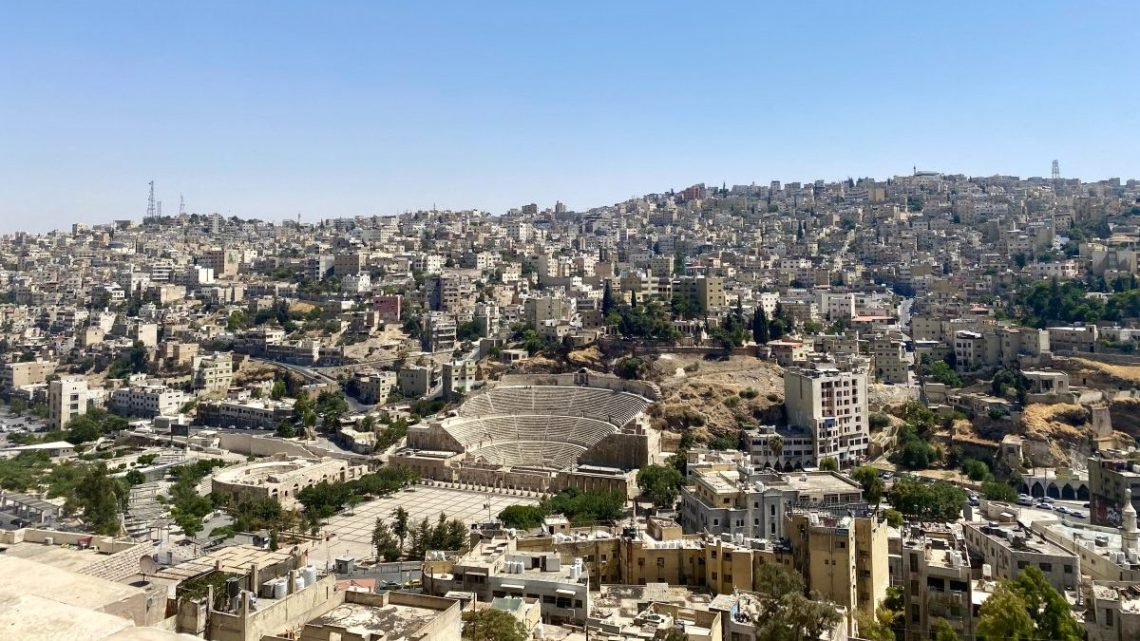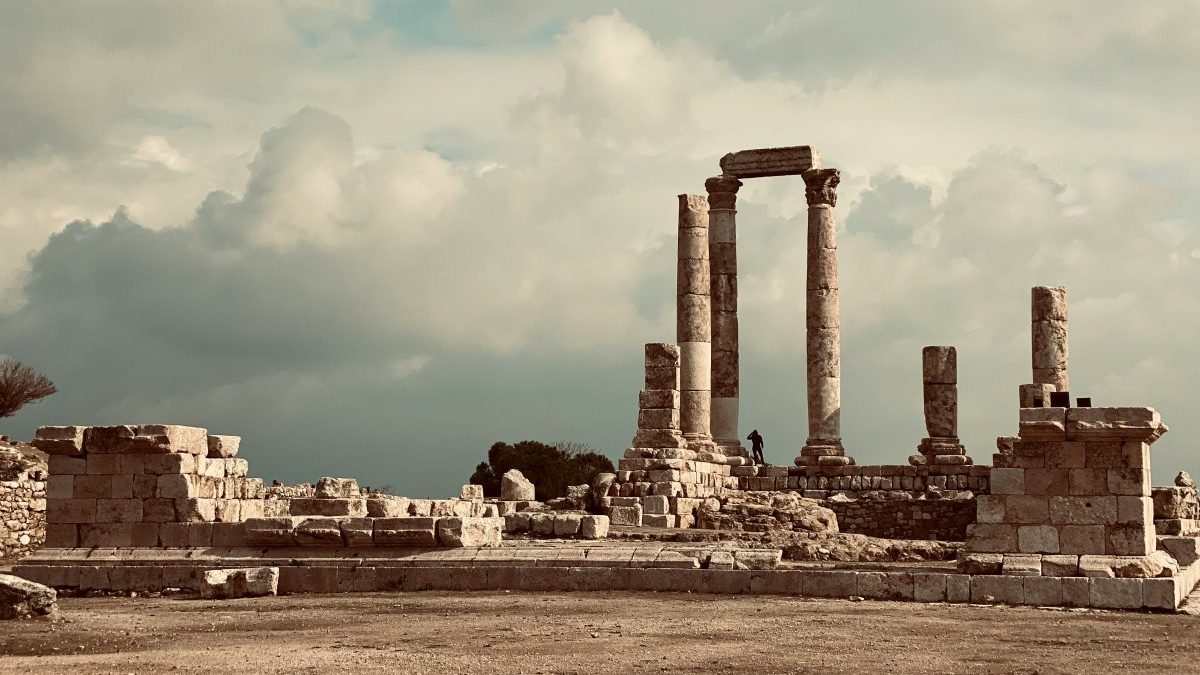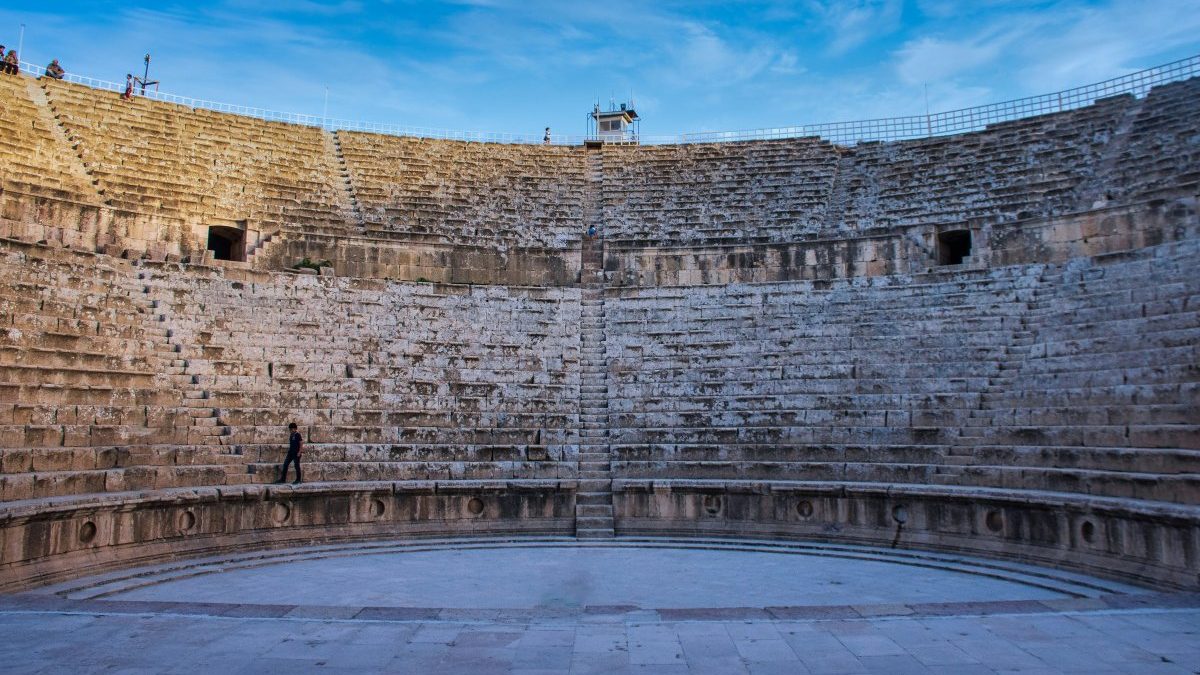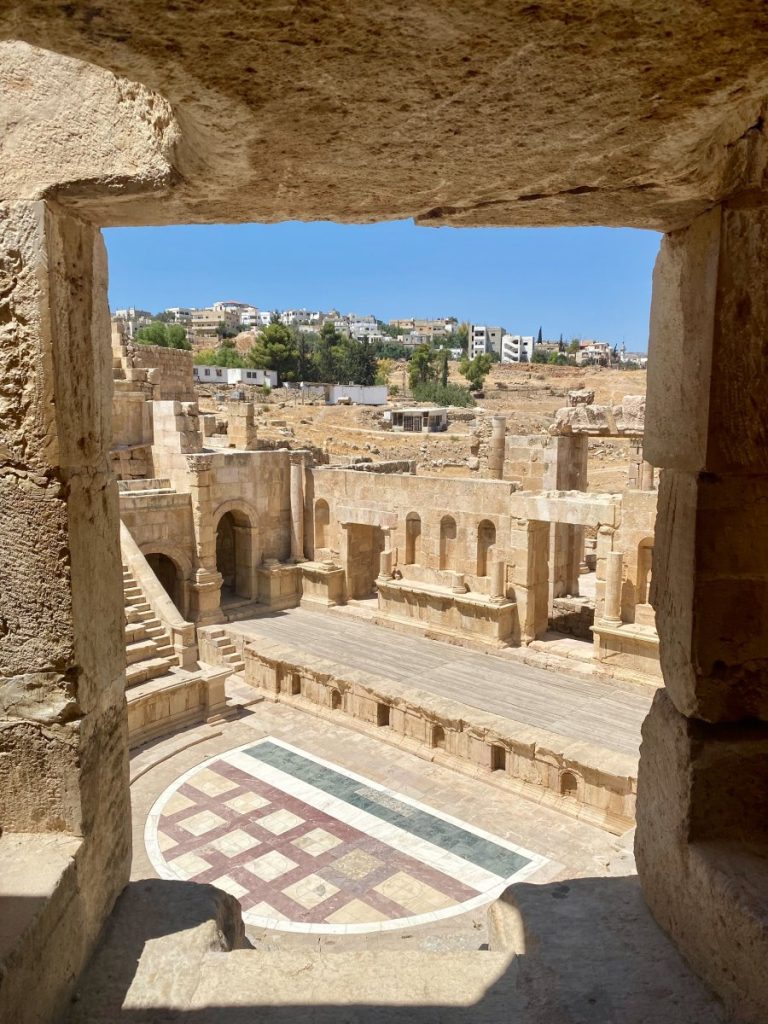
The Honest Amman Travel Guide you Needed
Jordan is a place that is on top of many people’s bucket lists. Petra, Wadi Rum, and the Dead Sea, are all world-famous attractions. However, the capital city of Amman is often overlooked by visitors.
Despite being the home of the country’s biggest airports and the starting point of most trips around Jordan, not many people enjoy what the city itself has to offer.
This Amman travel guide is meant to help you find amazing things to do in this bustling city, regardless of the length of your stay.
If you are wondering how to plan a trip to Jordan and you’re struggling to find all the information you need, head to my complete guide for the country. You won’t regret it!
A Little Bit Of History

Amman has a long history that dates back to the Neolithic period. It was originally named ‘Rabbath Ammon’ by the Ammonites, an ancient Semitic-speaking people who settled in the region. The city was later conquered by the Assyrians, followed by the Persians, and then the Greeks, who renamed it ‘Philadelphia’ after Ptolemy II Philadelphus.
The city became part of the Nabatean kingdom until it was conquered by the Roman Empire in 63 BC. Under Roman rule, Amman was part of the Decapolis, a group of ten cities on the eastern frontier of the Empire. The city flourished during this period, with many public buildings and monuments constructed, including the Roman Theater, which still stands today.
With the decline of the Roman Empire, Amman came under the rule of the Byzantine Empire and then the Islamic Caliphate after the 7th century Muslim conquest. The city’s name was eventually changed to ‘Amman’, derived from the biblical ‘Rabbath Ammon’, during the Islamic era.
Amman experienced periods of decline in its history, particularly during the Middle Ages. However, it began to revive in the late 19th century when the Ottoman Empire established a railway link to the city. The city’s growth accelerated in the 20th century, particularly after it became the capital of Transjordan, later known as the Hashemite Kingdom of Jordan, in 1921.
Is Amman Safe to Visit?
When it comes to safety, there’s not a lot you need to know. Comparatively, Amman is known as one of the safest Middle Eastern cities to travel to. I cannot stress enough how safe I felt during my stay there. Even walking at night in most areas is generally considered safe.
One of the first things that has to come to your mind when planning a trip is insurance.
Safetywing’s Nomad Insurance is one of the best options available out there. With a maximum coverage of 365 days, they are a great option whether you are a Nomad or not! They offer very low rates, but excellent coverage and immediate support (in a few minutes!). The best part? Nomad Insurance can be purchased even if you have left your home country already.
Lastly, they also cover extreme sports, something that can come in very handy if you are an adventurous soul.
One thing to note about Amman is that traffic can be chaotic and road rules are quite weird, so crossing the street or driving requires extra attention. But the city’s welcoming nature, combined with a careful approach towards personal safety, makes visiting Amman a rich and rewarding experience.
Lastly, it’s a wise idea to have a copy of essential emergency numbers. They include police, ambulance, fire department, and your home country’s embassy. In conclusion, if you keep your wits about you and respect local customs, your visit to Amman will very likely be free of any safety concerns.
What is the Best Time of Year to Visit Amman?
While every season brings its own charm and appeal to Amman, spring and autumn are maybe the most comfortable times to explore the city. From March to May and again from September to November, you’ll be met with moderate temperatures, making for better sightseeing and outdoor activities.
How Many Days are Enough for Exploring Amman?
If you’re aiming to make the most out of the city, an Amman travel itinerary of two to three days should cover most of the main attractions in this amazing city. This will give you plenty of time to immerse yourself in the local culture, explore the city’s historical sites, visit local bazaars, and experience the gastronomic delights.
However, if you’re planning to dive deeper into the Amman experience, you may want to extend your stay to four or five days. This will provide you with the flexibility to visit the outer neighborhoods, engage with locals, and perhaps even discover your own secret spots that aren’t featured on most tourist maps.
What is the local currency in Amman and where can I exchange money?
Amman, like the rest of Jordan, operates on the Jordanian Dinar (JOD), often simply referred to as Dinars. Whenever you see prices listed, they will usually be in Dinars.
The most convenient, and usually most cost-effective way to get Dinars is to withdraw them directly from an ATM. You’ll find plenty of ATMs throughout Amman, especially in the downtown area and in large shopping centers.
Alternatively, if you’re coming with foreign currency, such as dollars or euros, there are plenty of Banks for currency exchange offices in Amman. For me, a bank is the safest way to exchange money in a new country
Here’s an insider tip: if you’re using a credit or debit card to make purchases, you might be asked if you want to be charged in Dinars or your home currency. Always choose Dinars to avoid a potentially unfavorable exchange rate offered by the merchant.
Remember to keep some small change handy too! This allows for better negotiating in the local markets, and for tipping, which is customary in Jordan.
Is Amman expensive?

Well, isn’t that the million-dollar question, right? (Or should I say, Jordanian Dinar question?). Contrary to what you might think before your research, yes, Amman can be considered expensive compared to other major cities in the Middle East. While Accommodations are quite affordable, food, entertainment and transportation prices are very likely to surprise you.
Entrance fees for tourist attractions in Amman are generally affordable but can add up if you plan on visiting many sites. It’s worth looking into the Jordan Pass, which includes entry to over 40 tourist attractions throughout the country, including the Amman Citadel and the Roman Theater in Amman.
Generally, be prepared to pay the most for your food. It was really surprising to find out that medium-range restaurants cost the same as they would in an average European city. My point is, Amman, and Jordan in general, are not cheap places to travel to.
Where To Stay In Amman
While in Amman, we stayed in Layaali Amman Hotel. The rooms were clean, and spacious, and the staff was always helpful. The location was right in the city center, close to the Roman Theater. It was also very budget-friendly. I would definitely recommend it!
Booking a hotel through my website earns a small commission that helps me continue what I most love. This comes at no extra cost to you.
Moving Around
Getting around in Amman is part of the adventure, and there are numerous ways to explore this incredible city.
1. Car Rental
Renting a car is the most convenient way to move around the city. I would recommend the Monte Carlo car rentals. They have some of the lowest rates in the country, and our experience with them was great. Don’t forget to get full insurance, as accidents can always happen. Better safe than sorry!
2. Taxis
Taxis are another way to get around, but make sure to bring the best bargaining skills with you!
Uber and Careem: Both services operate in Amman, offering a monitored, easy-to-use alternative to taxis. You can pay by cash or card, and the cost is usually comparable or slightly higher than yellow taxis.
3. Buses
For the more adventurous, buses are an extremely affordable way to get around, with very budget-friendly fares. However, they don’t follow strict timetables and the routes can be tricky to understand for first-time visitors.
4. Walking
Amman is a hilly city with a lot of stairs. I wouldn’t say that it is a pedestrian-friendly city, especially if you want to see most of it. If you’re up for a bit of exercise, many of the tourist attractions are accessible by foot, particularly in the downtown area. Carry a hard copy of a detailed city map or have a reliable GPS app downloaded on your phone.
The BEST Things to Do in Amman
1. Visit the Roman Theatre

Let’s start strongly with a beautiful piece of Roman architecture, located in downtown Amman. The Roman Theatre of Amman was (As implied from the title) constructed when the city was under Roman rule. Nowadays, it serves as the cultural center of the city. Events such as concerts, dance performances, and theatrical productions are hosted regularly.
When you arrive there, you can explore the site itself and enjoy the panoramic views of Amman from the top rows. Additionally, it houses a small museum, where you will find a collection of artifacts from the Roman era. Entry is included in the Jordan pass.
2. Live like a local at Al Balad
No Amman travel guide would be complete if it didn’t include engagement with the kind and friendly locals. Al Balad is a historic district in the center of Amman and one of the liveliest places in the city! Always busy, the hustle and bustle make it as authentic as it gets. This place is a must if you want to glimpse local Jordanian life!
Al Balad is home to several markets where locals and tourists shop for traditional crafts, souvenirs, and local products. I literally lost count of all the things I bought there. I would highly recommend you dedicate an afternoon to walking around the neighborhood, buying some souvenirs, and trying some local street food. I got some sugar cane juice, and it was very tasty!
3. Explore the Amman Citadel
This one would rank as one of my favorite spots in the entire city. The Amman Citadel is located on top of a hill overlooking the city’s center. It has been inhabited since the Bronze Age, while the current ruins date back to the Roman, Byzantine, and Umayyad (Islamic) periods. The Citadel is home to many iconic landmarks, the most important being the temple of Hercules and the Umayyad Palace.
The temple of Hercules was built by the Romans and was dedicated to the famous demigod from Greek mythology. There, you can also see the famous ‘’hands of Hercules’’, the only remains of a statue that once stood there.
The Umayyad Palace is the other main attraction of the site. It dates back to the Islamic Umayyad period and served as a residence for the region’s rulers. It was an absolute joy to visit.
Entry is free if you have the Jordan pass.
4. See the Jordan Archeological Museum
The Jordan Archaeological Museum is one of the most significant museums in the Middle East. It is also built right on top of the Amman citadel. The museum’s collection is divided into sections according to the period of history.
There, you can explore sculptures, mosaics, and pottery from the civilizations that once inhabited Jordan. Some of the most notable exhibits would include the Dead Sea Scrolls and the extremely valuable Umayyad gold coins.
Many consider the former to be among of the most important archaeological finds of the 20th century, as they include collections of entire books that were included in the Biblical Canons. They are basically some of the oldest pieces of Christian History ever found.
5. Spend an Afternoon at Rainbow Street
The rainbow street is maybe the most famous neighborhood in the city, and rightly so! Its lively atmosphere, colorful buildings, and various shops, cafes, and restaurants stand as proof of Amman’s lively and diverse culture. Whether you want to visit day or night, Rainbow Street has everything a visitor could ask for.
Oh, and don’t miss out on Nabteh O Fatteh – my favorite restaurant in the country! The food was delicious, and the view from the eatery was majestic. Highly recommended!
What are the best souvenirs to bring back from Amman?
Well, you don’t travel to the Middle East every day. In the next part of my Amman Travel Guide, I’d love to talk about something we all love: Souvenirs! But, what truly are the best pieces to bring back with you?
1. Handcrafted Silver Jewelry
As you walk into the old city’s souks you’ll stumble upon numerous shops offering beautiful, handcrafted silver jewelry. You can find anything, from intricate bedouin designs to modernist creations. If you love silver or jewels, Amman is the right place for you!
2. Traditional Jordanian Attire
Keffiyeh, a meaningful part of Jordanian culture can be an exciting piece of clothing to bring back. Local shops in downtown Amman offer a variety of keffiyeh and, if you ask the owner, you might even get a chance to learn how to wear it like a local!
3. Local Spices
No trip to Amman is complete without diving into Jordan’s gastronomic culture. So, why not take some of it back home? Souvenirs like sumac, za’atar, or dried sage not only let you recreate Jordanian delicacies but also let the scent and flavors of Amman be part of your own kitchen.
4. Ceramics and Pottery
The tradition of pottery and ceramic art in Jordan dates back thousands of years. Beautifully hand-painted ceramics, inspired by traditional patterns and local life, can serve as beautiful decoratives for your home, or as gifts for your loved ones.
What are some popular Day Trips from Amman?
Escaping the city’s hustle and bustle for a day can be a refreshing experience, and fortunately, Amman’s position makes it an ideal base for numerous fascinating day trips. Let’s take this Amman Travel Guide a little bit wider and explore what lies beyond the city limits.
1. Jerash

Approximately 50 kilometers north of Amman, Jerash is known as one of the best-preserved Roman towns in the world and is an absolute must-see. From the impressive Hadrian’s Arch at the entrance to the fascinating Oval Plaza and Northern Theater, it is a remarkable live-in history experience.
2. The Dead Sea
Considered the lowest point on the earth’s surface, the Dead Sea is known for its mineral-rich, buoyant waters. About an hour’s drive from Amman, it’s usually marketed as a good place to relax and float in the salty water.
However, my experience in the Dead Sea was rather troubling. I have an entire article on why I wouldn’t visit the Dead Sea again, and I believe it would give you some good context on what to expect.
3. The Baptism Site of Jesus Christ
Recognized by the Vatican as the spot where Jesus was baptized, this site on the east bank of the Jordan River is rich with religious and cultural history.
However, and I do not intend to seem disrespectful, but I found the tour commercialized. I felt that spirituality was thrown away and left its place to a marketing scheme to buy souvenirs. But, again, that’s my own, personal opinion.
Amman Travel Guide – Final Thoughts
If you’re considering Amman for your next travel destination, you’re about to experience a city that holds centuries of culture, history, and traditional Jordanian hospitality, effortlessly merging the old and the new.
And that’s not all, the diversity of Amman is astonishing. Its traditional nature, vibrant nightlife, and authentic food will have you coming back for more.
Travel to this beautiful destination with an open mind and heart. Embrace the differences, respect the customs, and enjoy the undeniable charm of the city. The depth of experiences is what truly makes this city a unique adventure, and that’s what I’d like you to take from this Amman Travel Guide.




